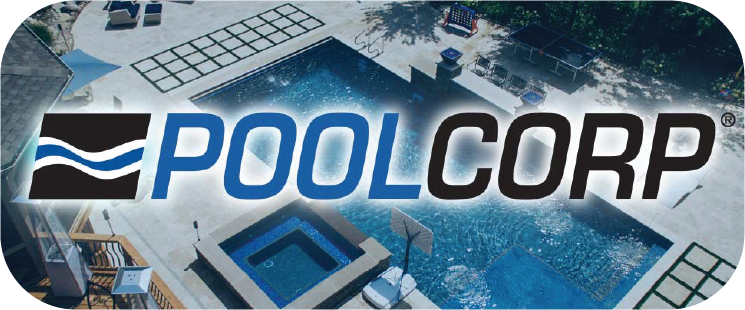FAQ POOL GLOSSARY
Swimming Pool Questions
PDX Pools FAQ
Pool Glossary and Frequently Asked Questions
ABOVE GROUND POOL: An above ground pool is a typically round- or oval-shaped structure that houses water and sits on top of the ground; above ground pools do not require excavation and are generally quicker and cheaper than inground pool options
ACID: a chemical, which lowers the pH when added to the water
ACID DEMAND: amount of acid required to lower pH and total alkalinity of pool water to correct level
AIR RELIEF VALVE: A manually-operated brass or plastic valve located at the top of a filter tank for relieving the pressure inside the filter and removing the air inside the filter (bleeding the filter). Also known as a pressure-relief valve.
ALGAE: microscopic aquatic plant life, which can grow on pool surfaces or float freely in the water. Though harmless, algae discolor the water and indicate improper sanitation.
ALGAECIDE: chemical used to kill or inhibit growth of algae
ALKALINITY: various chemicals and salts in the pool water that increase pH
AUTOMATIC POOL CLEANER: A pool maintenance system that will agitate and/or vacuum debris from the pool interior automatically.
AVAILABLE CHLORINE: free or combined chlorine used to disinfect pool water
MAIN DRAIN: A plumbing fitting installed on the suction side of the pump in pools, spas and hot tubs. Sometimes simply referred to as the drain, it is located in the deepest part of the pool, hot tub or hot tub. It does not function like the drain on a kitchen sink. Pool main drains do not allow the water to drain to waste but rather connect to the pump for circulation and filtration.
MOSAIC POOL TILE: Mosaic pool tile is made of smaller pieces of tile that combine to create a larger design
MURIATIC ACID: dilute solution of hydrochloric acid used to lower alkalinity
BACKWASHING: The process of thoroughly cleaning the filter by reversing the flow of water through it with the dirt and rinse water going to waste.
BAJA SHELF: Also known as a sun shelf or tanning ledge, a Baja shelf is a shallow, expansive shelf in the pool designed for lounging, tanning and more.
BALANCERS: Chemical compound designed to prevent corrosion and staining by balancing the pH, total alkalinity and calcium hardness in pool water.
BASE PLATE: Base plates are parts of an above ground pool that sit beneath each upright, providing a connection point for the base track and the upright itself.
BASE TRACK: A part of an above ground swimming pool that stretches from base plate to base plate between the uprights of the swimming pool and forms the bottom rim of the pool structure. During installation, this track has a groove into which the wall of the swimming pool is rolled.
BEACH ENTRY: Also known as a “zero entry pool,” beach entries are slightly sloped gradual entrances that replace swimming pool steps, giving pools a natural, organic appearance.
BROMIDE: A common term for a bromide salt used to supply bromide ions to the water so they may be oxidized or changed into hypobromous acid, the killing form of bromine. Used as a disinfectant.
BROMINE: A common name for a chemical compound containing bromine that is used as a disinfectant to destroy bacteria and algae in swimming pools and spas. Available as a tablet or as sodium bromide, a granular salt.
BTU: Abbreviation for British Thermal Unit. The amount of heat necessary to raise 1 lb. of water 1 degree Fahrenheit.
BULLNOSE COPING: Pool coping with rounded edges that extends over the side of the pool, used to finish exposed edges of decking
ORTHOTOLIDINE (OTO): chemical reagent that reacts with total chlorine/bromine, and turns water sample yellow
OVAL POOL: Oval-shaped swimming pool.
OXIDIZER: A non-chlorine shocking compound that removes or destroys built-up contaminants and chloramines in pool water without raising chlorine levels.
CABANA: A small tentlike poolside structure used as a changing room or lounge area.
CALCIUM HARDNESS: How much calcium carbonate is present in swimming pool water
CALCIUM HYPOCHLORITE: Chlorine in powder form; used as pool shock
CANTILEVER COPING: Also known as “no coping,” cantilever coping is a style of coping where the pool deck extends to the edge of the pool and does not hang over like in bullnose coping styles
CAVITATION: water is boiling in a pump. The flow of water from the suction lines is restricted, which causes a vapor lock at the impeller. Commonly recognized by a rumbling noise in the pump.
CENTRIGUGAL PUMP: A pump consisting of an impeller fixed on a rotating shaft and enclosed in a casing or volute and having an inlet and a discharge connection. The rotating impeller creates pressure in the water by the velocity derived from the centrifugal force.
CHECK VALVE: A mechanical device in a pipe that permits the flow of water or air in one direction only.
CHEMICAL FEEDER: A device that dispenses chemicals into pool or hot tub water at a predetermined rate. Some dispense chlorine or bromine while others dispense pH-adjusting chemicals.
CHLORAMINE: Formed when chlorine and ammonia interact in pools due to sweat, biological substances, insects and more; can irritate skin and eyes
CHLORINE: A term used to describe any type of chlorine compound used as a disinfectant in swimming pool and hot tub water or to kill, destroy or control bacteria and algae. In addition, chlorine oxidizes ammonia and nitrogen compounds cause by swimmers.
CHLORINE DEMAND: amount of chlorine required to destroy bacteria in pool water
CHLORINE NEUTALIZER: A chemical used to make chlorine harmless. Used in test kits to counteract the bleaching effect of the chlorine or bromine to increase the accuracy of pool water tests. Sold as chlorine and bromine neutralizer, it is used to destroy excessive amounts of chlorine or bromine so the high levels will not affect swimmers.
CHLORINE RESIDUAL: amount of chlorine remaining in pool water after chlorine demand has been satisfied
CIRCULAR POOL: Circular pools, also known as round pools, are swimming pools built in the shape of a circle, producing a classic contemporary look.
COMPOSITE DECKING: A mixture of wood and plastic forming an ultra-durable building material that resembles real wood.
CONDITIONER: Also known as stabilizer, pool conditioner protects chlorine from loss due to the sun’s UV rays (see Cyanuric Acid)
COPING: The cap or top lip on the pool or hot tub wall that provides a finished edge around the pool or spa. It can be formed, cast in place or precast, or prefabricated of extruded aluminum or rigid vinyl. It may also be part of the system that secures a vinyl liner to the top of the pool wall.
CORROSION: The etching, pitting, or eating away of the pool or hot tub or equipment. Can be caused by improper water balance, misuse of acid or acidic products or from soft water.
COVER, SOLAR: A cover that, when placed on the water’s surface of a pool, hot tub, or hot tub, increases the water temperature by absorption and transmission of solar radiation; reduces evaporation and prevents windborne debris from entering the water.
CYANURIC ACID: Also known as pool conditioner or stabilizer, cyanuric acid protects your pool’s chlorine from degradation due to sun light.
PALAPA: A palapa is an open-air structure with a thatched roof, popular for its breezy design.
PAVERS: Pavers are small paving stones made of clay, brick, stone or concrete.
PERGOLA: A pergola is an open-air outdoor structure with four support beams and a lattice or crossbeam roof.
PH (pH): Abbreviation for Potential Hydrogen. Indicates the level of acidity or alkalinity of water on a scale ranging from 0-15. A low pH can cause etched plaster, metal corrosion and eye irritation. A high pH can cause scale formation, chlorine inefficiency and eye irritation. The ideal range for pH in swimming pools is typically 7.4 to 7.6.
PHENAL RED: chemical reagent used to measure pH
POOL COVER, HARD TOP: A cover used on pools, spas and hot tubs that rests on the lip (coping) of the pool or hot tub deck ; not a flotation cover. Used as a barrier to swimmers and bathers and for maintenance and thermal protection.
PORCELAIN POOL TILE: Porcelain pool tile is a highly durable, richly colored product that is resistant to water-, chemical- and frost-damage.
PPM: parts per million, the accepted measurement of a quantity of substance in water
PUMP: A mechanical device, usually powered by an electric motor, which causes hydraulic flow and pressure for the purpose of filtration, heating and circulation of pool and hot tub water. Typically, a centrifugal pump is used for pools, spas and hot tubs.
PUMP CAPACITY: The volume of liquid a pump is capable of moving during a specified period of time. This is usually listed in gallons per minute or gpm.
PUMP CURVE: Also called a pump performance curve. A graph that represents a pump’s water flow capacity at any given resistance.
DECKING: The area surrounding a pool, typically concrete, wood, composite, or natural stone.
DIATOMACEAOUS EARTH (DE): white powder that is manufactured from microscopic skeletons of diatoms
DISSOLVED SOLIDS: calcium, copper salts, magnesium and other minerals that are suspended in water
DIVERTER VALVE: A plumbing fitting used to change the direction or redirect the flow of water. Some diverter valves are used on pool/spa combinations to allow the use of the hot tub and then switch the flow back to the pool.
DPD: chemical reagent that reacts with active chlorine/bromine and turns the water sample pink
DRAIN: This term usually refers to a plumbing fitting installed on the suction side of the pump in pools, spas, and hot tubs. Sometimes called the main drain, it is in the deepest part of the pool, hot tub, or hot tub. It does not function like a drain on a kitchen sink. Pool main drains do not allow the water to drain to waste but rather connect to the pump for circulation and filtration.
RAISED BOND BEAM: The pool’s bond beam rises vertically in one part of the pool, creating a wall
REAGENT: liquid or powder chemicals used to test concentrations of specific compounds in water
RECTANGLE POOL: Pool shaped like a rectangle with clean lines and sharp corners
RESIDUAL: amount of a compound existing in water, usually expressed as PPM
RETAINING WALL: A retaining wall protects your backyard from erosion and landslides caused by hills and inclines.
ROMAN POOL: Roman-style swimming pools are recognizable for their rectangular shape bookended by two half-circles.
FIBERGLASS: Finespun filaments of glass which are available in a rope or mat form. When used in a process with polyester resins, catalysts and hardeners, can be formed or molded into pools and spas.
FIGURE 8 POOL: A pool shaped like a figure 8
FILTER: A device that removes dissolved or suspended particles from water by recirculating the water through a porous substance (a filter medium or element). The three types of filters used in pools and spas are sand, cartridge and D.E. (diatomaceous earth).
FILTRATION: The rate at which the water is traveling through the filter, expressed in U.S. gallons per minute (gpm) per square foot of filter area.
FIRE FEATURES: A category of additional swimming pool features that includes fire pits, fireplaces, fire bowls and other enhancements that use fire.
FLAGSTONE: A flat, hard natural stone used for patios, walkways, decking, coping and more.
FLOCCULANT: Chemical that clumps floating particles in cloudy water, causing them to sink to the bottom; clumps are then removed manually via vacuum
FLOW RATE: The quantity of water flowing past a designated point within a specified time, such as the number of gallons flowing past a point in 1 minute — also known as gallons per minute or gpm.
FRAME: The part of an above ground pool that secures the wall in place and provides much of the strength for the pool; generally made of coated steel, extruded aluminum, or resin.
FREE CHLORINE: Measures the amount of chlorine in a pool undisturbed by contaminants; contaminated chlorine is known as “combined chlorine”
FREE FORM POOL: Freeform pools do not follow a specific shape, rather are characterized by their free-flowing curves
SANITIZERS: Chemical compounds designed to kill bacteria, algae, and other living organisms. Also protects water from the effects of the sun.
SCALE: Mineral deposits formed on pool surfaces, inside piping and on the filter as a result of high calcium hardness and high pH
SHOCK TREATMENT: The practice of adding significant amounts of an oxidizing chemical — (usually non-chlorine oxidizers, such as sodium persulfate or potassium peroxymonosulfate) — to the water to destroy ammonia and nitrogen compounds caused by swimmers, the environment and/or weather.
SKIMMER: A device installed through the wall of a pool or hot tub that is connected to the suction line of the pump that draws water and floating debris in the water flow from the surface without causing much flow restriction.
SKIMMER BASKET: A removable, slotted basket or strainer placed in the skimmer on the suction side of the pump, which is designed to trap floating debris in the water flow from the surface without causing flow restriction.
SODA ASH: sodium carbonate used to adjust the total alkalinity by increasing the pH
SOLAR COVER: A cover that, when placed on the water’s surface of a pool, hot tub, or hot tub, increases the water temperature by absorption and transmission of solar radiation; reduces evaporation and prevents windborne debris from entering the water.
SPA: A small, heated tub, often with built-in jets, designed for hydrotherapy and relaxation.
SPOOL: The combination of “small,” and “pool,” a spool is a small pool.
STONE VENEER: Stone veneer is a manufactured stone that simulates the look of natural stone and is applied to the exterior of outdoor structures, walls, and buildings.
SUPERCHLORINATION: heavy dose of chlorine added to pool water to “burn out/shock” nitrogen compounds when bacteria, algae or chloramine build-up cannot be reduced by normal treatment
SWIM-UP BAR: A built-in swimming pool feature that includes a large horizontal shelf above the water for beverages and snacks and underwater bar stools.
GEOMETRIC POOL: Geometric pools are characterized by clean lines and sharp angles
GLASS POOL TILE: Glass pool tile is specially designed to withstand temperature changes, chemical damage and being submerged in water; glass pool tiles are often transparent or opaque
GLOSSY POOL TILE: Glossy pool tile is water-, chemical- and frost resistant tile with a shiny exterior
GPM: Abbreviation for “gallons per minute.”
GRECIAN POOL: Grecian pools typically have diagonal corners rather than sharp squared corners like those found in rectangle pools
GROTTO: A grotto is a swimming pool water feature made of large rocks build above and around a cavernous swimming area.
GROUT: A paste-like mixture applied between tiles that dries solid, creating an insoluble surface.
GUNITE: A mixture of cement and sand sprayed onto contoured and supported surfaces to build a pool. Gunite is mixed and pumped to the site dry, and water is added at the point of application. Plaster is usually applied over the gunite.
GUTTER: An overflow trough at the edge of the pool through which floating debris, oil and other “lighter-than-water” things flow. Pools with gutters usually do not have skimmers.
TANNING LEDGE: See “Baja Shelf”
TEST KIT: An apparatus or device used to monitor specific chemical residuals, levels, constituents or demands in pool or hot tub water. The most common pool and hot tub water tests are: pH, total alkalinity, free available chlorine, water hardness, cyanuric acid, iron and copper.
TEST STRIPS: Small plastic strips with pads attached that have been impregnated with reagents that can be used to test pool water for residuals, levels, constituents or demands. The strips are usually dipped in the water, and the resulting colors of the pads are compared to a standard set of colors to determine concentration.
TOP CAPS: Usually made of resin or other form of plastic, the top cap covers the top plate and help to give an above ground pool a more finished, attractive look.
TOP PLATES: You will find a top plate attached to the top of each upright of an above ground pool. They provide connection points for the top track and top rails that span between each post.
TOP RAILES: Top rails form the top ledge of the swimming pool. Ranging up to 12″ in width, the rails connect between each post (see Uprights)
TOP TRACK: Sometimes called a stabilizer bar, the top track rests over the top of the wall, but beneath the top rails. The top track interlocks from top plate to top plate, helps to keep the top of the wall straight, and helps to keep the pool liner securely in place.
TOTAL ALKALINITY (TA): measurement of alkaline chemicals in water. TA acts as a pH buffer. Too high of a TA prevents easy adjustment of pH. Low TA causes pH to change and fluctuate widely. Proper pool TA is 100 to 125 ppm.
TOTAL DISSOLVED SOLIDS: total of dissolved material in the water. High total dissolved solids in pool water (over 1500 ppm) can cause poor sanitizer efficiency, cloudy water and odors.
TURBIDITY: The cloudy condition of the water due to the presence of extremely fine particles in suspension that cannot be trapped by the filter because they are too small. Adding a clarifier, such as an organic polymer or alum, will coagulate the particles and make the filter more efficient.
HAND SKIMMER: A screen attached to a frame which is then attached to a telescopic pole used to remove large floating debris, such as leaves and bugs, from the water’s surface.
HARDNESS: measurement of dissolved solids in water
HARDSCAPES: Hardscapes refer to any hard landscaping building material, for example, concrete and natural stone.
HEAT EXCHANGER: A device located inside the heater providing for the transfer of heat from the heat source to the water. This is usually a series of metallic tubes with fins located just above the flames.
HEATER: A fossil-fueled, electric, or solar device used to heat the water of a pool, hot tub or hot tub.
ZERO EDGE POOL: The edges of a zero edge pool spill over, creating an illusion of boundlessness. Also known as an Infinity Pool.
ZERO ENTRY POOL: Also known as a “beach entry pool,” these pools have a slightly sloped entry that resembles a beach.







